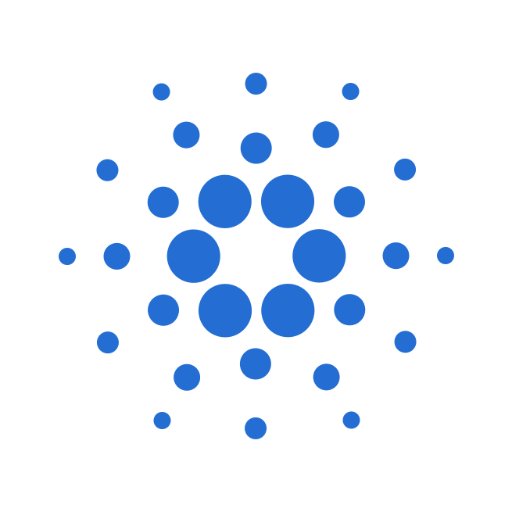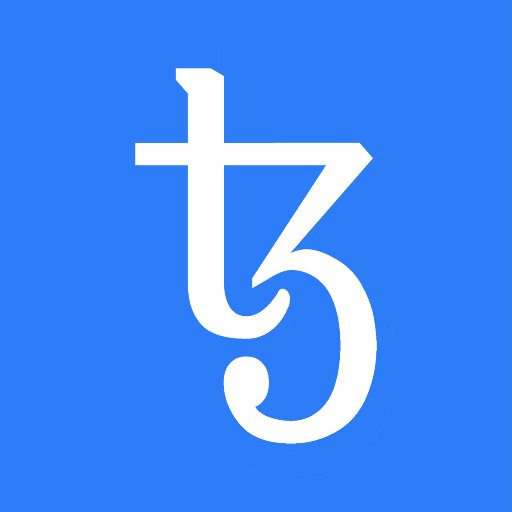Cardano (ADA) と Tezos (XTZ) を比較 Coin
Like never before, the world of cryptocurrency is witnessing a rising tide of competition playing out in various dimensions, especially between Cardano (ADA) and Tezos (XTZ). This article will delve into a comprehensive comparison between these two dominant forces in the digital currency universe, focusing on their primary attributes, technological edge, and trade-offs. Our aim is to arm prospective investors and technology enthusiasts with balanced insight for a more informed decision.
Cryptogeekユーザー評価
Cryptogeekエキスパート評価
概要
|
カルダノコイン(ADA)は、2017年に発売された暗号通貨です。通貨はカルダノネットワークに基づいています。開発チームのリーダーは、カルダノの発売前にイーサリアムとビットシェアーズで働いた経験豊富な開発者であるチャールズホスキンソンです。カルダノは、学術的に査読されたオープンソースコードを使用する最初の暗号通貨であり、このプロジェクトは非常にユニークです。 CardanoのコンセンサスアルゴリズムはProof-of-Stakeです。カルダノは通常、その高いレベルのセキュリティと迅速な取引で高く評価されています。カルダノ通貨はすぐに価値を獲得し、時価総額で暗号通貨のトップ10に入りました。
|
Tezosは、独自のブロックチェーンとネイティブトークン(Tezos、XTZ)を備えたスマートコントラクトプラットフォームです。ガバナンスは、Proof-of-Stakeアルゴリズムによって実行されます。これは、利害関係者(少なくとも10,000 XTZを所有している人)がプロトコルの変更に投票することを意味します。これらのバリデーター(「パン屋」)は、検証のパフォーマンスに対する報酬を受け取ります。報酬はインフレを介して生成されます。 XTZをパン屋に委任する人も稼ぐことができます。 Tezosには「自己修正」メカニズムが組み込まれており、フォークを作成することなくネットワークを形成できます。コミュニティを統一し続け、開発プロセスを容易にします。
|
タイプ
創業日
国
言語
チーム
プロトコル
|
Public blockchain
|
Public blockchain
|
現在価格(USD)
過去最高値(USD)
価格変更(24時間)
ボリューム(24時間)
|
74731914.04327
|
451427.22583
|
ハッシュレート
最大供給量
総供給
循環供給量
|
45000000000.00000
|
1078169563.09230
|
トランザクションスピード / ブロックタイム
トランザクション手数料
マイニングの収益性
アルゴリズム
証明タイプ
完全に掘り下げ
スマート契約アドレス
採掘されたコインの合計
|
25927070538.00000
|
810904882.00580
|
取引されています
ブロック報酬
|
0.000000000000
|
0.000000000000
|
ブロックタイム
| 企業 |
|
|
| Cryptogeekユーザー評価 |
Cryptogeekユーザー評価
4.3 / 5
7 ユーザーレビュー
|
Cryptogeekユーザー評価
4.5 / 5
4 ユーザーレビュー
|
| Cryptogeekエキスパート評価 |
Cryptogeekエキスパート評価
3.8 / 5
|
Cryptogeekエキスパート評価
3.4 / 5
|
| トラストスコア
しくみ
|
トラストスコア
4.39 / 5
|
トラストスコア
4.08 / 5
|
| 概要 |
カルダノコイン(ADA)は、2017年に発売された暗号通貨です。通貨はカルダノネットワークに基づいています。開発チームのリーダーは、カルダノの発売前にイーサリアムとビットシェアーズで働いた経験豊富な開発者であるチャールズホスキンソンです。カルダノは、学術的に査読されたオープンソースコードを使用する最初の暗号通貨であり、このプロジェクトは非常にユニークです。 CardanoのコンセンサスアルゴリズムはProof-of-Stakeです。カルダノは通常、その高いレベルのセキュリティと迅速な取引で高く評価されています。カルダノ通貨はすぐに価値を獲得し、時価総額で暗号通貨のトップ10に入りました。
|
Tezosは、独自のブロックチェーンとネイティブトークン(Tezos、XTZ)を備えたスマートコントラクトプラットフォームです。ガバナンスは、Proof-of-Stakeアルゴリズムによって実行されます。これは、利害関係者(少なくとも10,000 XTZを所有している人)がプロトコルの変更に投票することを意味します。これらのバリデーター(「パン屋」)は、検証のパフォーマンスに対する報酬を受け取ります。報酬はインフレを介して生成されます。 XTZをパン屋に委任する人も稼ぐことができます。 Tezosには「自己修正」メカニズムが組み込まれており、フォークを作成することなくネットワークを形成できます。コミュニティを統一し続け、開発プロセスを容易にします。
|
| タイプ |
タイプ
coin
|
タイプ
coin
|
| 創業日 |
創業日
2017
|
創業日
2016
|
| 国 |
国
International
|
国
USA
|
| 言語 |
言語
データなし
|
言語
データなし
|
| チーム |
チーム
Public
|
チーム
Public
|
| プロトコル |
プロトコル
Public blockchain
|
プロトコル
Public blockchain
|
| 現在価格(USD) |
現在価格(USD)
0.9030
|
現在価格(USD)
0.7571
|
| 過去最高値(USD) |
過去最高値(USD)
1.3300
|
過去最高値(USD)
4.4600
|
| 価格変更(24時間) |
価格変更(24時間)
1.99
|
価格変更(24時間)
2.12
|
| ボリューム(24時間) |
ボリューム(24時間)
74731914.04327
|
ボリューム(24時間)
451427.22583
|
| ハッシュレート |
ハッシュレート
データなし
|
ハッシュレート
データなし
|
| 最大供給量 |
最大供給量
45000000000.00000
|
最大供給量
データなし
|
| 総供給 |
総供給
データなし
|
総供給
データなし
|
| 循環供給量 |
循環供給量
45000000000.00000
|
循環供給量
1078169563.09230
|
| トランザクションスピード / ブロックタイム |
トランザクションスピード / ブロックタイム
50
|
トランザクションスピード / ブロックタイム
15
|
| トランザクション手数料 |
トランザクション手数料
データなし
|
トランザクション手数料
データなし
|
| マイニングの収益性 |
マイニングの収益性
high
|
マイニングの収益性
medium
|
| アルゴリズム |
アルゴリズム
Ouroboros
|
アルゴリズム
データなし
|
| 証明タイプ |
証明タイプ
PoS
|
証明タイプ
DPoS
|
| 完全に掘り下げ |
完全に掘り下げ
データなし
|
完全に掘り下げ
データなし
|
| スマート契約アドレス |
スマート契約アドレス
データなし
|
スマート契約アドレス
データなし
|
| 採掘されたコインの合計 |
採掘されたコインの合計
25927070538.00000
|
採掘されたコインの合計
810904882.00580
|
| 取引されています |
取引されています
yes
|
取引されています
yes
|
| ブロック報酬 |
ブロック報酬
0.000000000000
|
ブロック報酬
0.000000000000
|
| ブロックタイム |
ブロックタイム
データなし
|
ブロックタイム
データなし
|
ソーシャル
ウェブサイト
Twitter
メリット
|
Friendly
Peer-reviewed technology
Scalable
|
Has impressive on-chain governance
Self-amending blockchain
Secure smart contract programming language
|
デメリット
|
Competitors in the same space
Still in development
Multiple chains
|
ICO was followed by delays
Young ledger
High-risk investment
|
評価
| Cryptogeekユーザー評価 |
Cryptogeekユーザー評価
4.3 / 5
7 ユーザーレビュー
|
Cryptogeekユーザー評価
4.5 / 5
4 ユーザーレビュー
|
| Cryptogeekエキスパート評価 |
Cryptogeekエキスパート評価
3.8 / 5
|
Cryptogeekエキスパート評価
3.4 / 5
|
| メリット |
メリット
Friendly
Peer-reviewed technology
Scalable
|
メリット
Has impressive on-chain governance
Self-amending blockchain
Secure smart contract programming language
|
| デメリット |
デメリット
Competitors in the same space
Still in development
Multiple chains
|
デメリット
ICO was followed by delays
Young ledger
High-risk investment
|
Cardano (ADA) のユーザー評価は、 7 のユーザーレビューに基づいて 4.3 です。 ユーザー評価 Tezos (XTZ) に基づく 4 のユーザー評価は 4.5 です。
We also calculate the special Cryptogeek TrustScore based on the characteristics of each coin.
他の企業を選択
In conclusion, there's no definitive verdict on whether Cardano (ADA) or Tezos (XTZ) is superior as both digital currencies present distinct virtues and have their unique areas of expertise. The choice between them largely depends on the individual investor's goals, risk appetite and perspective on their future developments. Hence, understanding the nuances, as laid out in this comparison, forms the bedrock of a more informed investment decision. Stay updated, stay invested, and stay informed!
Like never before, the world of cryptocurrency is witnessing a rising tide of competition playing out in various dimensions, especially between Cardano (ADA) and Tezos (XTZ). This article will delve into a comprehensive comparison between these two dominant forces in the digital currency universe, focusing on their primary attributes, technological edge, and trade-offs. Our aim is to arm prospective investors and technology enthusiasts with balanced insight for a more informed decision.

